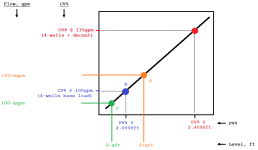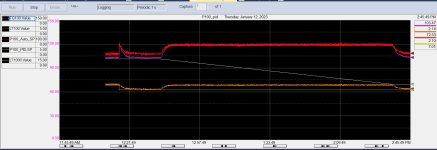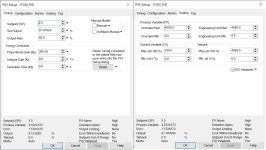drbitboy
Lifetime Supporting Member
For all of you popcorn eaters out there ...

...
What is a ballpark time constant, in milliseconds, for a VFD to run a pump like this? E.g. if the current speed reference is 40Hz and the pump motor is running at that 40Hz, and the PID bumps that by 1Hz to 41Hz, how long does it take for the pump motor to get to 40.63Hz? And is an exponential model even a reasonable approximation?
Or is this process so slow that motor response is irrelevant, which seems more likely?

What is a ballpark time constant, in milliseconds, for a VFD to run a pump like this? E.g. if the current speed reference is 40Hz and the pump motor is running at that 40Hz, and the PID bumps that by 1Hz to 41Hz, how long does it take for the pump motor to get to 40.63Hz? And is an exponential model even a reasonable approximation?
Or is this process so slow that motor response is irrelevant, which seems more likely?
Last edited:












